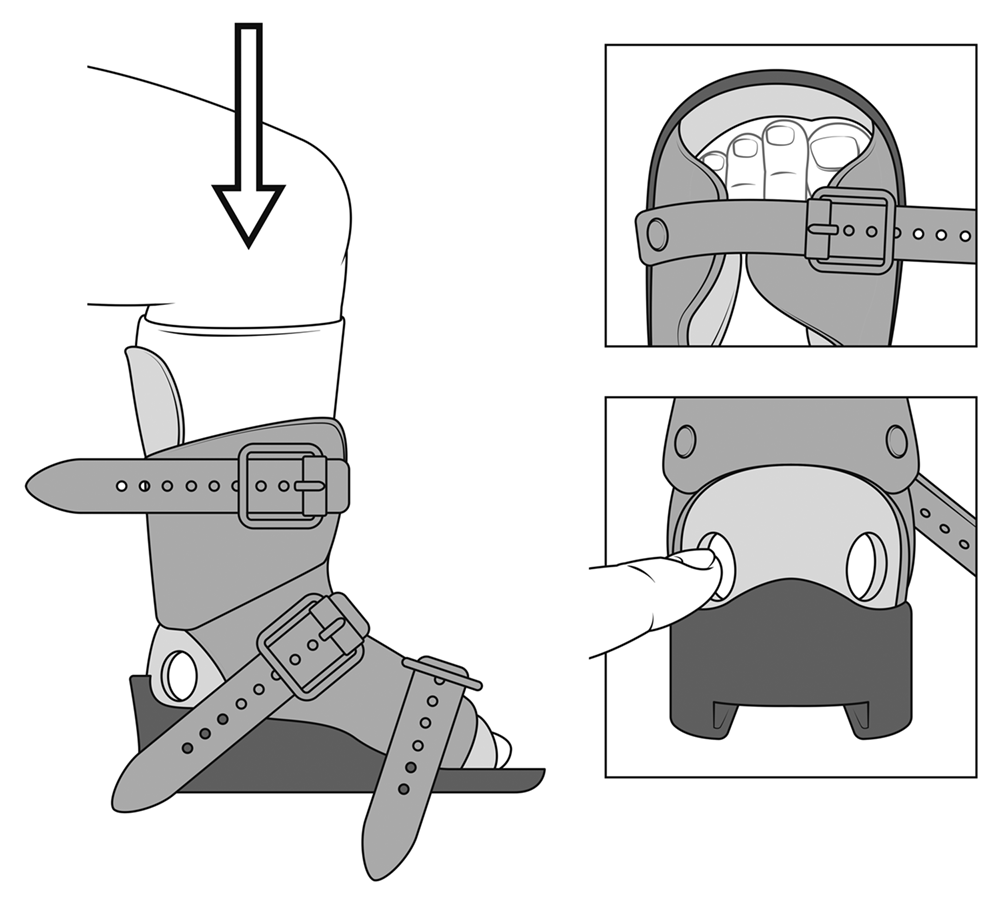Congenital Talipes Equino Varus (CTEV), also known as Clubfoot, is a common condition that affects one or both feet. A baby with CTEV has a foot that turns in at the ankle and points upwards.
Treatment
A technique called the Ponseti method is the standard treatment for clubfoot. Your child will have their foot/feet gently stretched, and a series of casts applied to correct the foot. If needed, this is followed by a small procedure to lengthen the Achilles' tendon.
An orthosis, often called boots and bar, is then used to overcorrect the feet and hold them in dorsiflexion (foot pointing up), external rotation (foot pointing out) and valgus (flattened arch). It is essential that bracing only starts once the foot has been fully corrected following plaster casts.
The brace comprises of shoes and a connective bar. The distance between the heels of the shoes is about the width of your child’s shoulders.
If both feet are affected, the shoes are externally (outward) rotated on each side. If only one foot is affected, the unaffected foot is set at a neutral position.
How long will my child need the orthosis?
After the final plaster cast is taken off and the foot is fully corrected, your child will wear the brace:
- twenty-three hours a day for the first three months
- sixteen hours a day after initial three months
- fourteen hours a day once your child is pulling to stand
- twelve hours a day once your child is walking
Once your child is wearing the orthosis for 12 hours a day (overnight and naps), they will continue wearing the brace until they are four years old. CTEV has a tendency to return to its original position (relapse) even after correction. To prevent a relapse, your child will continue to use the boots and bar until the age of four.
Putting the boots and bar on your child
- Dress your child in cotton socks that are long enough to cover their foot and leg. Change to clean socks daily.
- Remove the boots from the bar.
- Ensure all buckles are undone. Place the most difficult/affected foot into the boot first, with buckles located on the inside of the foot.
- Bend your child’s knee as you push the heel down into the boot. Hold the foot and heel down as you tighten the ankle strap.
- Tighten the calf and foot strap so they are firm. Check heel is down by looking through the hole at the side of the heel.
- Tighten the ankle strap one more hole if possible and check tension of the other two straps. Check heel is down again.
- Repeat with other boot.
- Slide the bar into the base of the boots until you hear an audible click.

Follow-up
Further reviews with an orthotist and physiotherapist will happen every three months until your child is walking. Once their feet are stable, your child will be reviewed every six months. If your child outgrows the boots (toes hanging over the edge), contact your orthotist.
Key points to remember
- CTEV is a common condition.
- Treatment is very effective in correcting and preventing a relapse.
- Your child will wear the brace until they are four years old.
More information
Reviewed February 2023
Developed by Orthotics and Prosthetics Department (Allied Health).